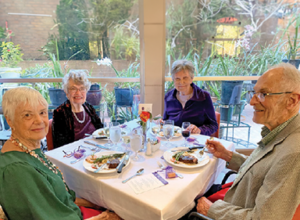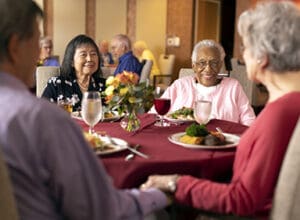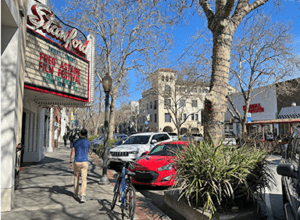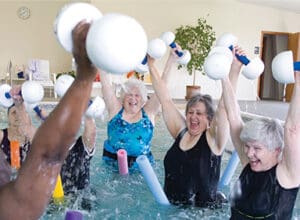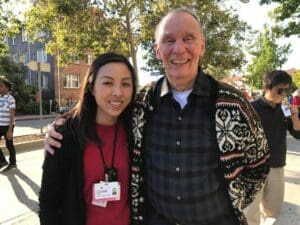
What is Independent Living?
Independent living in Palo Alto, CA, is a housing option for seniors who are generally healthy and active and can live independently with minimal assistance. Unlike assisted living or nursing homes, independent living communities allow residents to maintain a high level of independence and autonomy in their daily lives.
Independent living communities can take various forms, from standalone apartment complexes to retirement villages with multiple housing options and shared amenities. The goal of these communities is to provide a supportive environment that enables seniors to live independently while still having access to the resources and support they need.
The Benefits of Independent Living for Seniors
- Increased independence and autonomy: Independent living communities allow seniors to maintain control over their daily lives and make their own decisions while still having access to support and resources when needed.
- Enhanced social engagement: These communities often offer a range of social activities, events, and opportunities for residents to connect with their peers, reducing the risk of social isolation and loneliness.
- Improved health and wellness: Independent living communities frequently provide access to fitness facilities, wellness programs, and healthcare services, which can help seniors maintain their physical and mental well-being.
- Reduced caregiving burden: For families, independent living can alleviate the stress and responsibilities of providing full-time care for a loved one, allowing them to focus on quality time together.
Signs That Your Loved One May Be Ready for Independent Living
- Difficulty with daily tasks: If your loved one is struggling with activities of daily living, such as bathing, dressing, or preparing meals, an independent living community may provide the support they need.
- Social isolation or loneliness: If your loved one is increasingly isolated or disengaged from their social network, an independent living community can offer opportunities for socialization and community engagement.
- Caregiver burnout: If you or other family members are experiencing caregiver burnout, an independent living community can help alleviate the burden and allow your loved one to maintain their independence.
- A desire for a more active lifestyle: Some seniors, even if they are still relatively healthy and independent, may be interested in the amenities and social opportunities offered by independent living communities.

Choosing the Right Independent Living Community
- Location: Consider the proximity to family, friends, and familiar surroundings, as well as access to healthcare providers and other essential services.
- Amenities and services: Evaluate the amenities and services offered, such as dining options, transportation, fitness facilities, and social activities, to ensure they align with your loved one’s needs and preferences.
- Care and support: Understand the level of care and support available, including the availability of healthcare services, emergency response systems, and staff assistance.
- Community culture and atmosphere: Visit the community in person to understand the overall atmosphere, the engagement and interaction among residents, and the staff’s approach to supporting residents.
Making the Transition to Independent Living
- Involve your loved one in the decision-making process: Actively engage them in selecting and transitioning to an independent living community, allowing them to have a voice in the decision.
- Facilitate a gradual adjustment: If possible, arrange for your loved one to visit the community and participate in activities before the move to help them become more comfortable with the new environment.
- Assist with downsizing and packing: Help your loved one declutter, organize, and pack their belongings to ensure a smooth move and the ability to personalize their new living space.
- Encourage social engagement: Encourage your loved one to participate in the community’s social activities and events to help them build connections and a sense of belonging.
- Provide ongoing support: Remain actively involved in your loved one’s transition, providing emotional support, assistance with any challenges, and regular check-ins to ensure a successful adjustment.
Common Challenges and How to Overcome Them in Independent Living
While independent living can offer numerous benefits, it’s essential to be aware of potential challenges and have strategies to address them. Some common challenges and solutions include:
- Social isolation: Encourage your loved one to participate in community activities, join interest-based clubs, or volunteer to help them build meaningful connections with their peers.
- Declining health or mobility: Work closely with the community’s healthcare providers to ensure your loved one’s needs are met, and consider assistive technologies or home modifications to support their independence.
- Cognitive changes: Watch for signs of mental decline and collaborate with the community’s staff and healthcare professionals to implement appropriate support and interventions.
A Brighter Chapter Ahead
Navigating the transition to independent living with your loved one can be a complex
and emotional process. Still, with the right information, resources, and support, it can be a rewarding and empowering experience for both of you. By understanding the benefits of independent living, recognizing the signs that your loved one may be ready, and carefully selecting the right community, you can help ensure a smooth and successful transition. If you are considering independent living for your loved one, please contact the Webster House at (650) 327-4333 to learn more about our services and how we can help your family.

